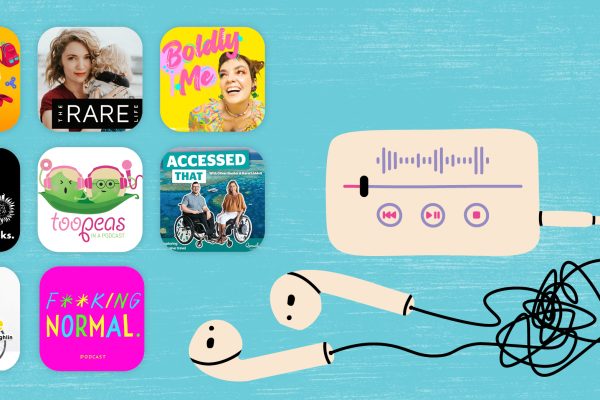
Memory strategies to work on with your child
Memory plays a crucial role in a child’s learning and development, influencing their ability to retain and recall information essential for academic success and daily living tasks. However, certain neurodevelopmental conditions and learning disabilities, particularly those affecting executive functioning, can present challenges in memory processes. These challenges may impact a child’s capacity to organise information, maintain focus, and effectively retrieve learned material. There are strategies you or your child’s school can work on however to help them in this area.
Help in the classroom
Visual aids and mnemonics: Visual aids such as charts, diagrams, and pictures can significantly aid memory retention. Mnemonics, which are memory aids or techniques, can also be helpful. For instance, using acronyms or creating visual associations can make information more memorable and easier to recall.
Chunking information: Breaking down information into smaller, manageable chunks can make the information overload less overwhelming. Organising material into categories or themes can help a student better process and remember details.
Repetition and practice: Consistent repetition and practice are key to reinforcing memory. Encourage regular review sessions and interactive activities that reinforce concepts. This can be done through games, quizzes, or hands-on learning experiences.
Multi-sensory learning: Engaging multiple senses simultaneously can enhance memory retention. Incorporate activities that involve touch, sight, sound, and movement to create a holistic learning experience. For example, using manipulatives or incorporating music and rhythm into lessons can be beneficial.
Utilising technology: Leverage technology tools and applications designed for education. Interactive software, educational games, and adaptive learning platforms can provide personalised support and engage children in memory-enhancing activities.
Creating a structured environment: Establishing a structured and predictable learning environment can help children feel more comfortable and focused. Clear routines, visual schedules, and consistent cues can support memory recall and overall learning success.
Encouraging self-regulation: Teach children self-regulation techniques such as mindfulness exercises, deep breathing, and positive self-talk. When children learn to manage their emotions and attention, they can improve their ability to focus and retain information.
Incorporating real-Life connections: Relate academic concepts to real-life experiences or interests of the child. Making learning relevant and meaningful can boost engagement and memory retention. Discussions, field trips, and hands-on projects that bridge classroom learning with practical applications all help.
Activities for at home
Establishing routines: Creating predictable daily routines can help children eel more secure and focused. Consistent schedules for meals, bedtime, homework, and playtime provide structure and aid memory by reinforcing regular activities and expectations.
Using visual aids: Incorporate visual aids such as charts, calendars, schedules, and diagrams to reinforce learning concepts and daily routines. Visual cues can help children remember tasks, responsibilities, and upcoming events more effectively.
Encouraging active learning: Engage children in hands-on, interactive learning experiences that stimulate multiple senses. Activities such as puzzles, games, art projects, and experiments promote active engagement and enhance memory retention.
Practice repetition: Encourage regular practice and repetition of key information, such as sight words, math facts, or important dates. Reviewing material consistently over time strengthens memory consolidation and recall.
Creating memory games: Play memory-enhancing games such as memory matching, scavenger hunts, storytelling, and word association games. These activities make learning fun while improving cognitive skills and memory retention. See some ideas you can implement below!
Encouraging sleep and nutrition: Ensure children get adequate sleep and maintain a balanced diet rich in nutrients essential for brain function. Quality sleep and proper nutrition support cognitive development and enhance memory consolidation.
Modelling organisation and memory strategies: Lead by example by demonstrating effective organisation skills and memory strategies yourself. Show children how to use tools like planners, memory aids, and mnemonic techniques to manage tasks and information effectively.
Memory games to try
Memory matching pairs: This classic game involves matching pairs of cards face down, with the goal of remembering the location of matching pairs. You can create customised cards with pictures or symbols that are familiar to the child or reflect their passions and interests. Start with a few pairs and gradually increase the complexity as your child improves.
Touch and feel: Prepare a set of small containers or bags filled with different textured objects (e.g., cotton ball, sandpaper, fabric, plastic, etc.). Let the child touch and feel each object, then place them in a container or bag. Ask the child to recall and match the objects based on their texture alone.
Sound memory game: Use a variety of sound-producing items such as musical instruments, bells, shakers, or animal noise toys. Play each sound for a few seconds and ask the child to remember and match the corresponding sound with the correct item. This game helps improve auditory memory and discrimination skills. Extend the activity by asking your child to match your rhythm or notes.
Sensory tray memory game: Fill a shallow tray with various sensory materials like rice, beans, beads, or buttons. Show the child a pattern or arrangement in the tray, then cover it and ask them to recreate the pattern from memory. This game enhances visual-spatial memory and fine motor skills.
Sequence: Create a sequence of actions or movements (e.g., clapping, stomping, waving, etc.) and demonstrate it to the child. Ask the child to mimic the sequence correctly. Gradually increase the length and complexity of the sequences as the child progresses.
Colour and shape memory game: Use coloured blocks or shapes and arrange them in a specific pattern or sequence. Show the pattern to your child for a few seconds, then ask them to recreate it using the same colours and shapes. This game improves visual memory, colour recognition, and pattern recognition skills.
Story sequence: Create a simple story with sequential events or actions. Read or tell the story to the child, then ask them to recall and arrange the events in the correct order. This game enhances narrative memory and sequencing skills. You can use picture cards as an aid.
Name and face game: Prepare a set of cards with pictures of people or characters along with their names written below. Show the cards to the child and ask them to match the names with the corresponding faces. This game supports facial recognition and memory of names.






